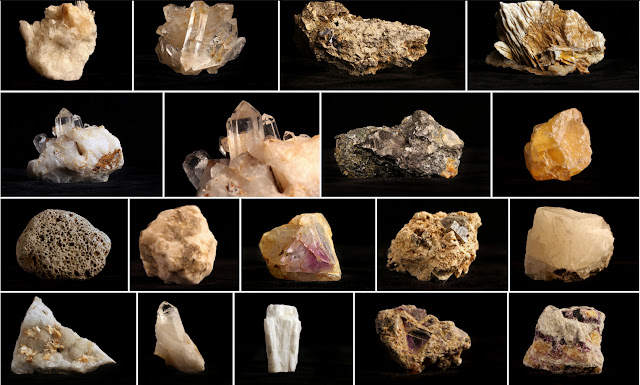Just as the big game hunter must wait patiently in the wild, or must cover a large territory, in search of their prey, a dedicated fossil hunter spends more time looking than finding.

But then there are those locales that defy description. These locales are so packed with remnants of past life that we get the extreme joy of actually rejecting "lesser quality" finds.
Like a gorgeous gal at a dance who can pick and choose her partners, these sites allow us to turn down anything below a certain expectation of quality.
 The famous Indiana State Highway 1 roadcut a few miles north of St. Leon is one of those rare places. In over 4 decades of rockhounding, few sites that I have visited can even begin to compare with the sheer quantity and quality of fossil-easy-pickings here.
The famous Indiana State Highway 1 roadcut a few miles north of St. Leon is one of those rare places. In over 4 decades of rockhounding, few sites that I have visited can even begin to compare with the sheer quantity and quality of fossil-easy-pickings here.The terraced slopes gracing both east and west sides of the state route are nearly solid aquatic fossil beds. Almost every rock you can pick up, see, or touch is a mass of the memories of marine life.
I have visited the site on multiple occasions with my son, Chase, and the locale has never ceased to amaze me in terms of the richness of the material. There are signs warning over-zealous collectors against using large tools (prybars, etc) in the area.
But trust me, you wont need much more than a small hammer, chisel, and a large bucket or two.

 My personal favorites in the area are the horn corals, but brachiopods, bryozoans, and even trilobites are found throughout (though a trilobite here is a rare gem).
My personal favorites in the area are the horn corals, but brachiopods, bryozoans, and even trilobites are found throughout (though a trilobite here is a rare gem).In other collecting sites around the world, the fossil rich zone is usually a single, well-defined layer. But here, all the layers, from those even with the highway, all the way to the top of the deep roadcut, are packed with fossils.

To reach this ancient treasure chest, take Interstate 74 to the St. Leon turnoff, then head north. Once you pass through St. Leon, the huge roadcut (about 1/2 mile long!) will be approximately 3.3 miles north of town.
CLICK HERE for a Google Map to the exact location
 |
| A nice horn coral in matrix |
Visit our Rockhounding USA Store. Find that perfect gift for any Rockhound or Prospector in your life!










































